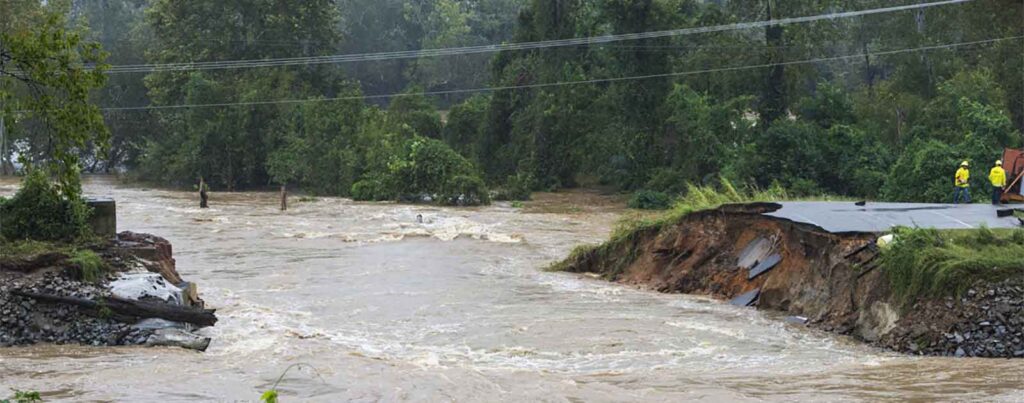After Extreme Flooding, South Carolina Needs a New Dam Management Strategy
With more extreme weather events expected in South Carolina, dam removal and better dam management are key strategies to prevent future public safety crises.

October’s devastating flooding overwhelmed Columbia and other South Carolina communities and shattered our sense of safety and security. While the area received heavy rainfall outside our control, the damage to our communities was compounded by multiple dam failures that we can take steps to prevent in the future. This underscored that the state needs a better strategy for dam management.
Sixteen dams failed in the Columbia area and more than three dozen failed across the state, which sent storm surges through neighborhoods and business districts. The floodwaters claimed roads and bridges, damaged homes, and most tragically, caused the loss of 19 lives.
After the water cleared, three critical facts emerged.
First, South Carolina’s landscape is littered with dams that either don’t meet modern design criteria or are out of compliance with maintenance requirements. Second, the state’s dam safety program is seriously flawed. Most disturbing, the flood levels recorded in most South Carolina rivers and streams did not break records. This disaster was not a once-in-a-lifetime anomaly. It was a warning to expect higher flood levels to become increasingly common.
The State newspaper reported that the Department of Health and Environmental Control has asked for additional funding and new staff positions to double the size of its dam safety program, which is currently resource-starved. To keep downstream families and businesses safe, the state desperately needs more trained staff to verify that dams are well maintained and, when not in compliance with modern safety standards, to rigorously enforce regulations to ensure flawed dams are repaired.
Unfortunately, with approximately 2,400 regulated dams in South Carolina, we can’t expect the Department of Health and Environmental Control to properly inspect all of these structures, most of which are privately owned. Dam owners need to take responsibility to ensure their structures are regularly inspected by certified dam inspectors who then report the results to the state. Further, in the interest of public safety, dam owners should consider removal in cases where they can’t afford necessary repairs. Not only is removing a dam often cheaper and faster than repairing it, removal is always safer than leaving a flawed dam in place.
The Association of State Dam Safety Officials and FEMA recommend a model dam safety program that might benefit South Carolina. Rather than running state employees people across the state, dam safety program staff would concentrate on reviewing certified inspection reports submitted by owners and third-party inspectors and then working with dam owners to ensure deficiencies are addressed promptly and properly. This strategy is less resource-intensive without sacrificing the safety of downstream residents.
Residents should expect that severe bouts of drought and flooding are the new normal for Columbia and South Carolina. Further, the nation’s leading scientists, including some from the University of South Carolina, tell us that catastrophic weather events will become more frequent and more extreme in the coming decades.
We have already suffered needlessly as a result of the extreme rains, devastating flooding and dam failures we should now expect. The safety and security that the citizens of South Carolina so greatly value depends on our taking action now to ensure that all dams meet modern safety criteria and are inspected regularly.




1 response to “After Extreme Flooding, South Carolina Needs a New Dam Management Strategy”
A great strategy for flood control. Do no build in a flood plain and if humans have done so, then get the hell out. Rivers need to breath and be allowed to expand during heavy rains and snow melt events. They have done so for millions of years and will continue for the next several million years. Any fool would know this with the exception of the US Department of Reclamation.